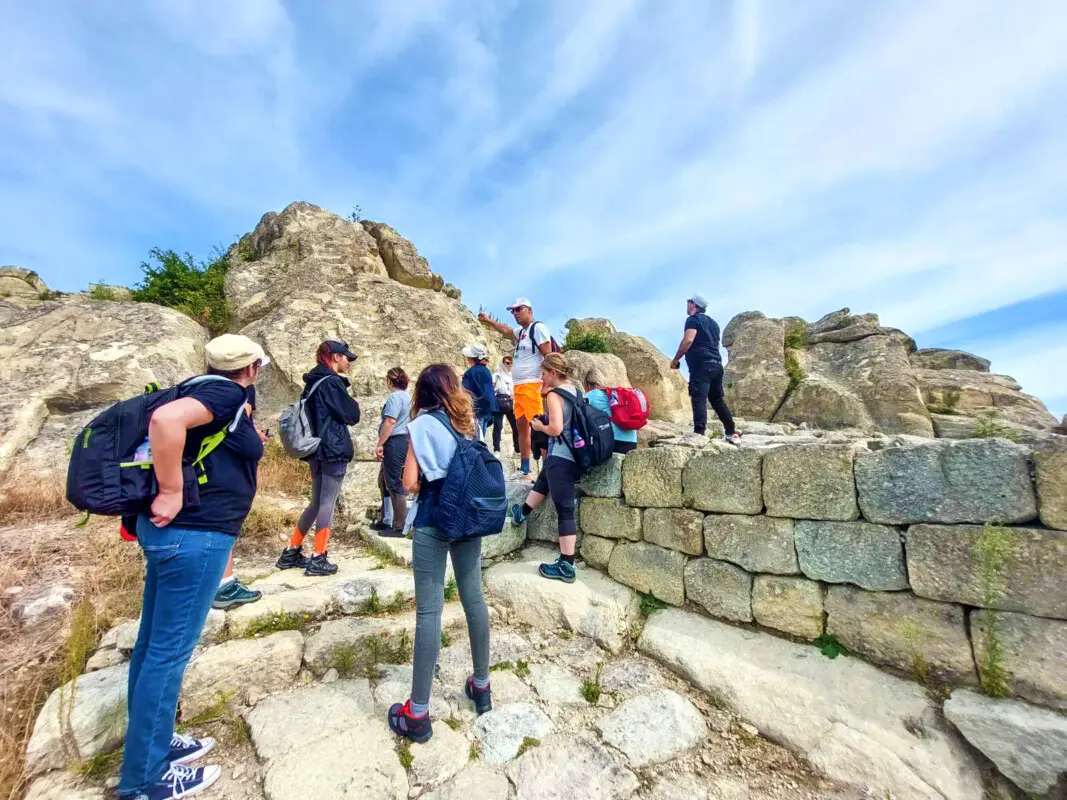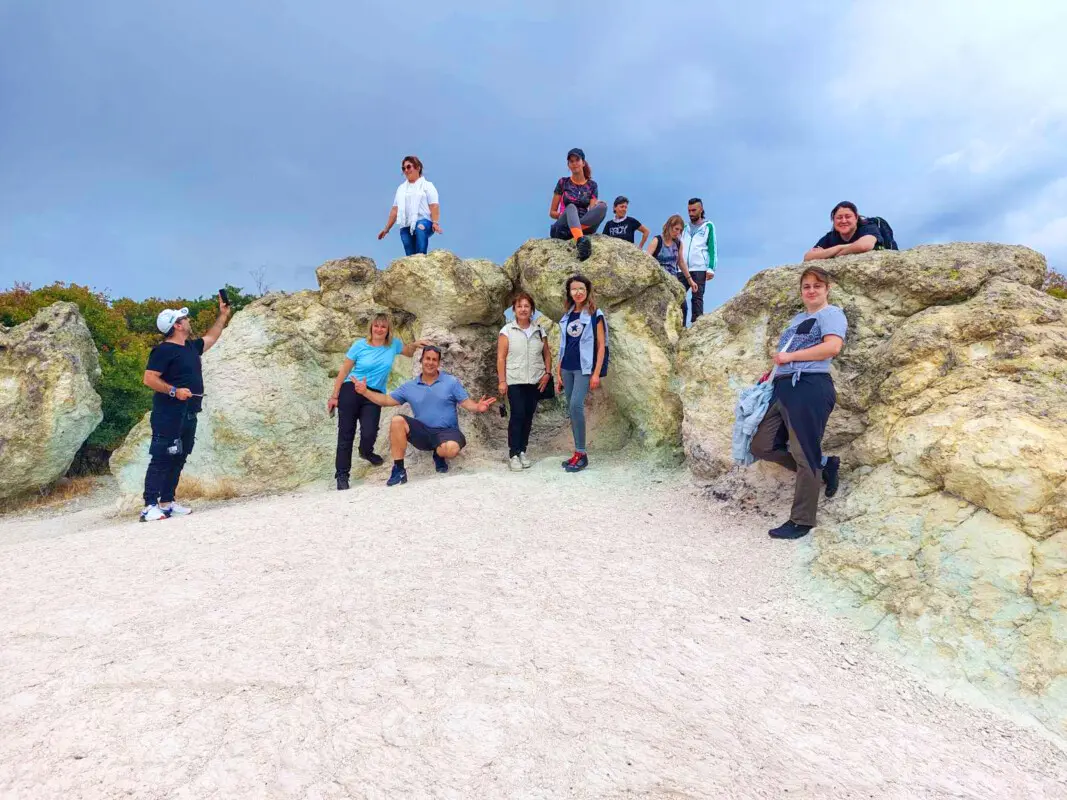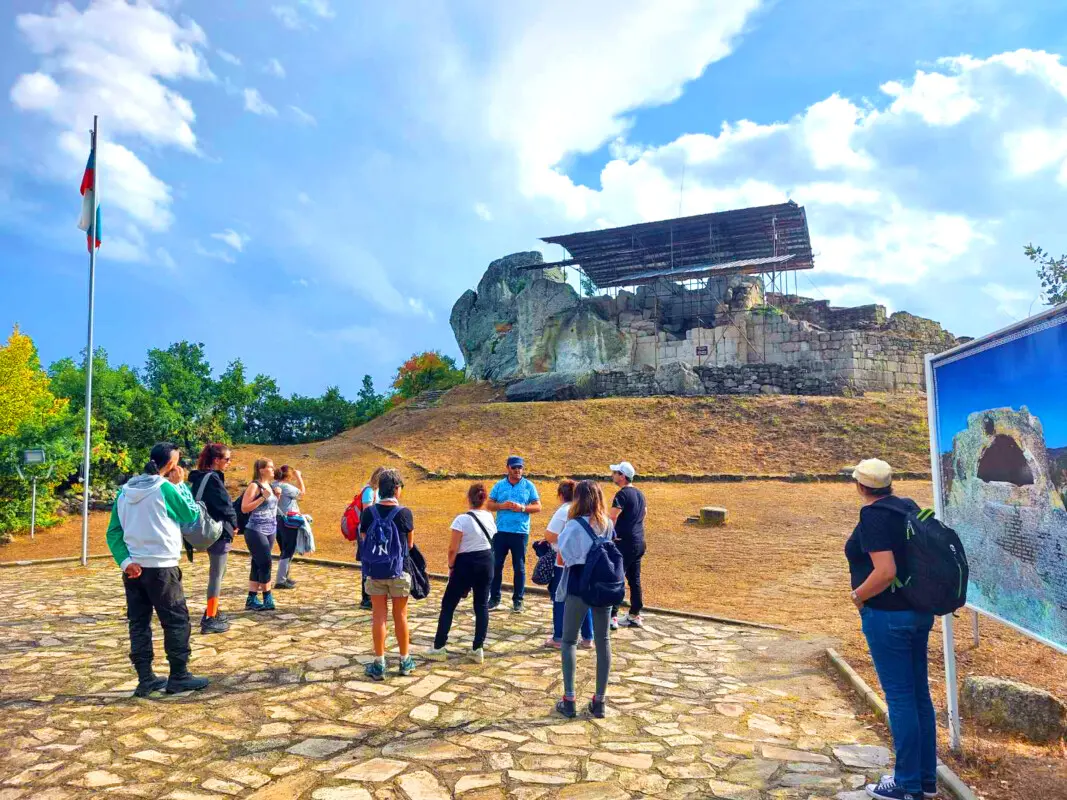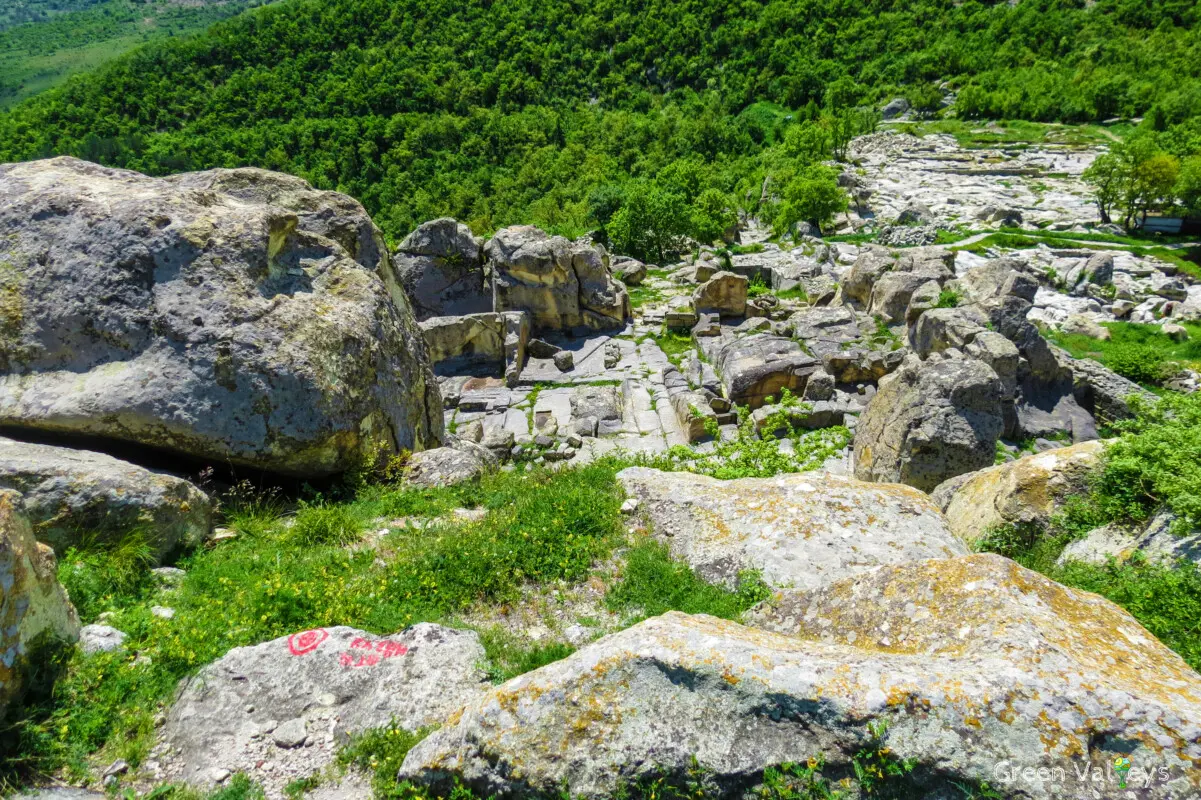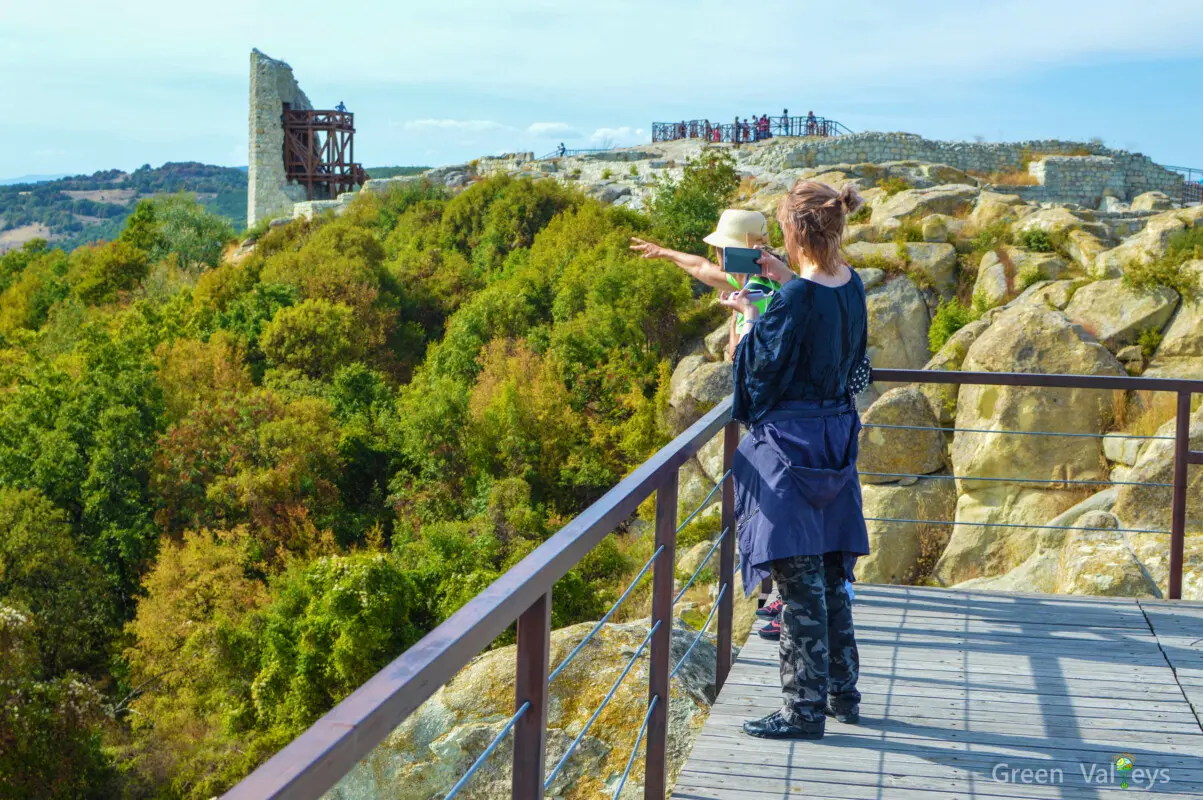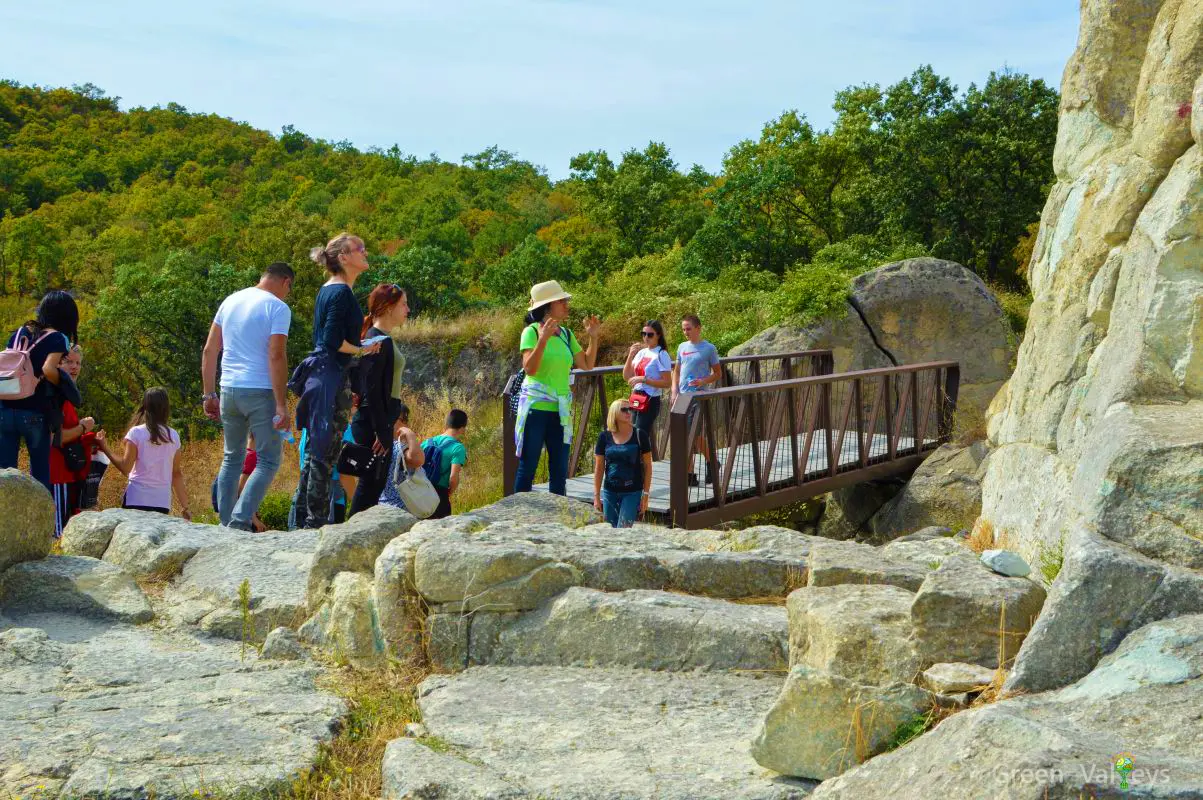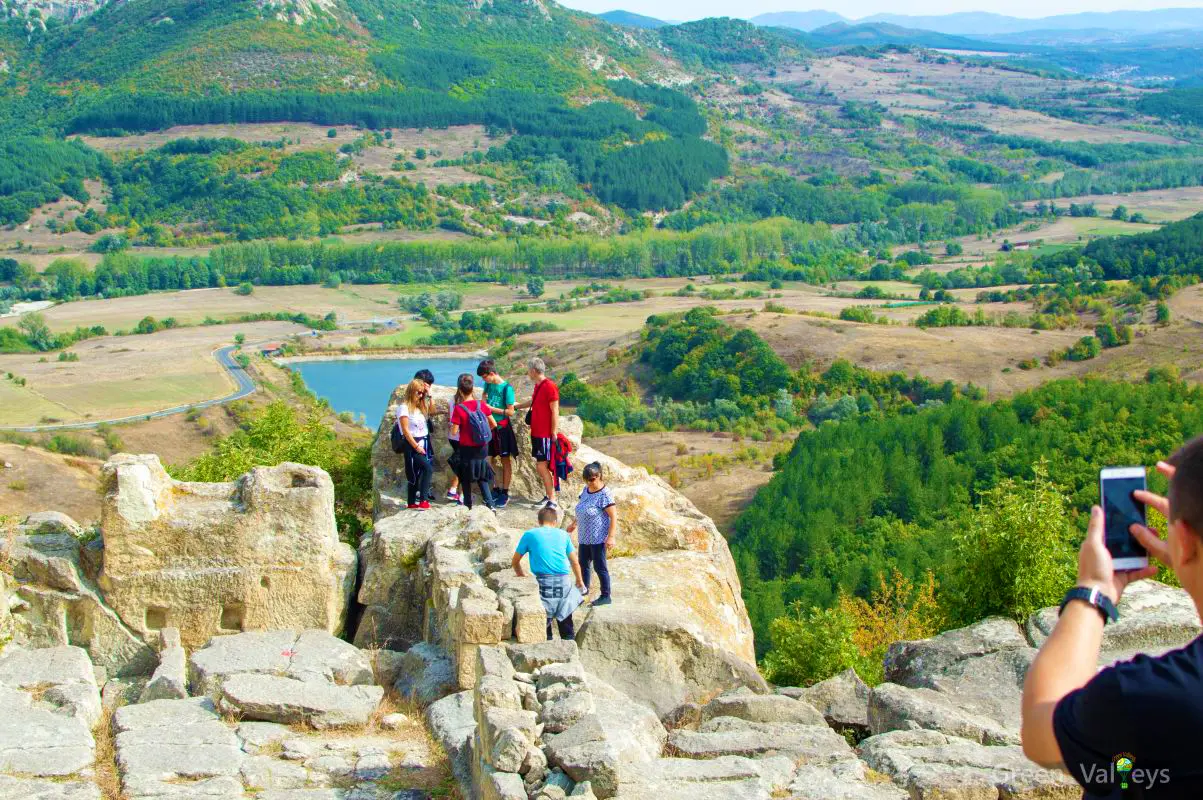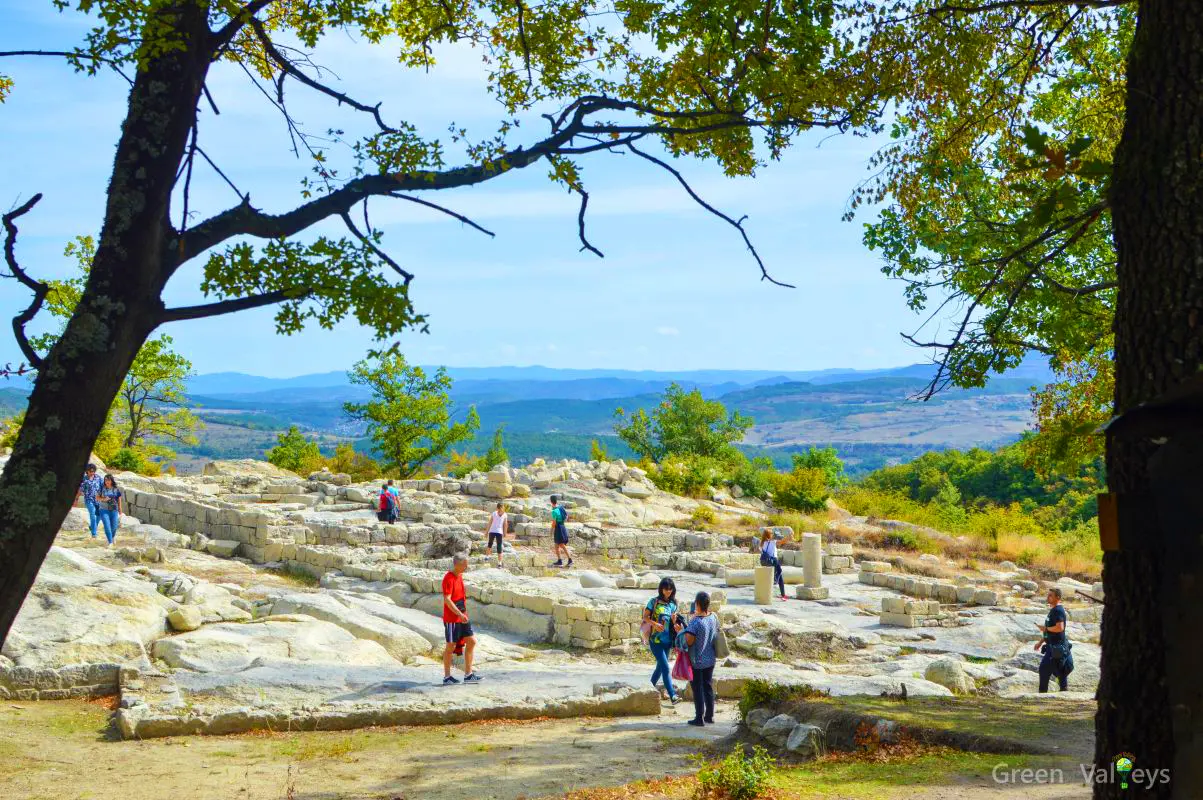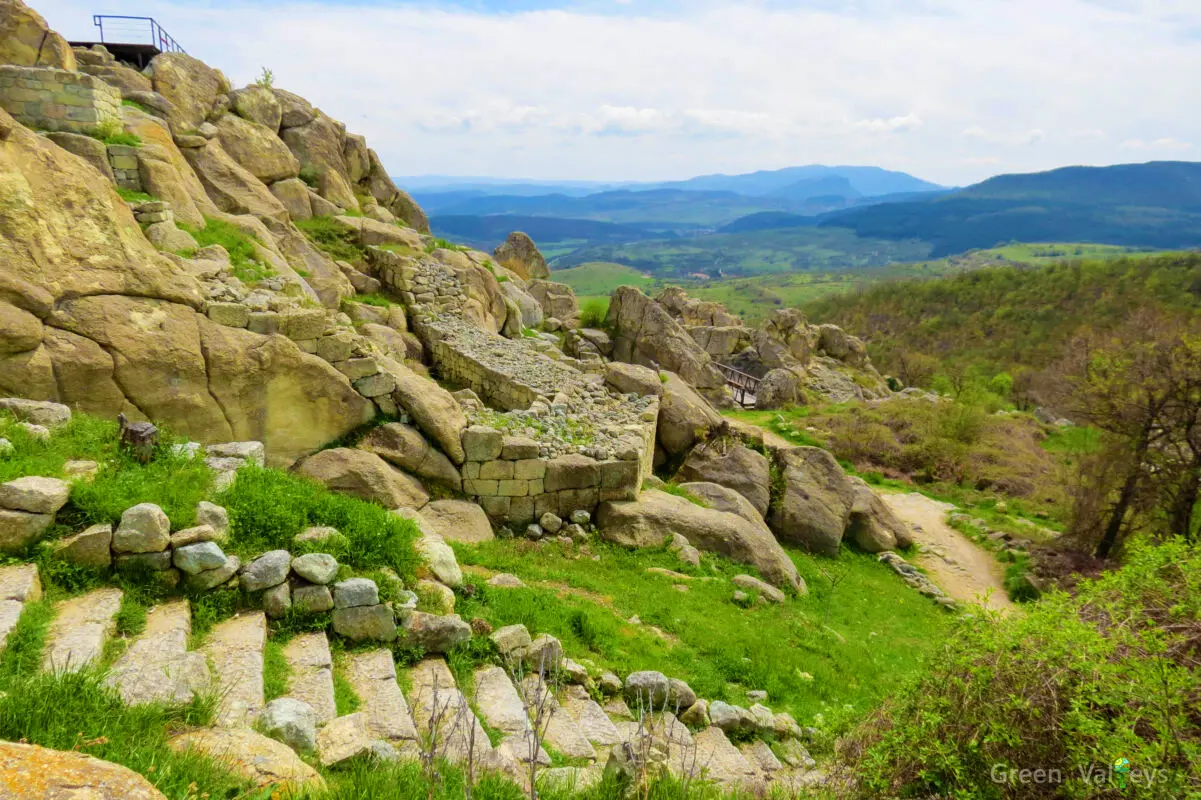Perperikon and Tatul
Tour schedule:
From 110 BGN
Price for Adult: 125 BGN with VAT.
Price for Child (3-16): 110 BGN with VAT.
Price for Senior/Student: 110 BGN with VAT.
Price for Group over 4 people: 120 BGN with VAT.
Tour Details
This tour will take you an journey deep into antiquity
Explore the antiquity temple and Sanctuary at Perperikon. According to the legends, two crucial prophecies were made from the altar of this temple. The first one predicted great conquest and glory for Alexander the Great. The second, made a several centuries later, predetermined the power and strength for the first Roman Emperor – Gaius Julius Caesar Augustus. The town was probably a royal residence for the Thracian tribe Bessie.
Rhodope Mountains
The Rhodope Mountains have rich cultural heritage, including ancient Thracian sites such as the Thracian city of Perperikon, Tatul village, medieval castles, churches, monasteries and picturesque villages with traditional Bulgarian architecture from the 18th and 19th centuries.
The area is especially remarkable for its karst areas with its deep river gorges, large caves and specific sculpted forms.
Highlights:
∗ Our team will be waiting to greet you at the parking in front of Hotel Princess (Trimoncium Hotel Plovdiv), http://!!!Green Valleys meeting point Plovdiv. google/maps!!!, or you can arranged your Pick up point in advance with member of our booking team.
∗ Discover the ancient Thracian city of Perperikon, one of the most popular tourist destinations in Bulgaria.
∗ Picnic lunch in the picturesque mountain scenery, next to the park of Perperikon.
∗ Enjoyable afternoon at the Thracian Sanctuary of the village of Tatul and the Temple of Orpheus where the legends of Orpheus come to life. Orpheus was considered one of the chief poets and musicians of antiquity and is still a symbol of the art of music.
∗ Visit the stone Mushrooms near Perperikon.
∗ Boarding the coach and departing back to the town of Plovdiv.
In case of medical issues or allergies you should always consult your tour representative if you are not sure of what ingredients a dish contains.
Places You’ll See



Tour Interary:
Day Tour
∗ 08:45: Tour starts from the parking in front of Hotel Princess (Trimoncium Hotel Plovdiv), http://!!!Green Valleys meeting point Plovdiv. google/maps!!!, or you can arranged your Pick up point in advance with member of our booking team.
∗ 11:00 – 13:00: Discover the antiquity fortress and Sanctuary at Perperikon. The medieval archeological complex Perperikon is one of the most ancient monumental megalithic structures, completely carved into the rocks. This is one of the most popular tourist destinations in Bulgaria. Religious activities in the upper part of the rocks began in the 5th century BC. The complex is associated with the beliefs of the people of the Copper Age, from which the cult of the sun god began. During this tour you will see the medieval temple and learn about its history. According to legends, two very significant prophecies were made from the altar of this temple. The first foretells the great glory of Alexander the Great and his exploits, and the second, which was done several centuries later, predetermines the power and authority of the first Roman emperor – Gaius Julius Caesar Augustus. Recent archaeological research clearly shows that the temple of Dionysius was located right in the area of Perperikon.
∗ 13:00 – 14:00: Picnic lunch among the a beautiful nature of the mountain, next to the park of Perperikon.
∗ 14:00 – 14:30: Visit the stone Mushrooms near Perprikon.The rocks are one of the most unique and whimsical rock formations you ever seen.
∗ 15:30 – 16:30: Explore the Thracian Sanctuary of the village of Tatul and the Temple of Orpheus where the legends of Orpheus come to life. Orpheus was considered one of the chief poets and musicians of antiquity and is still a symbol of the art of music.
∗ 17:00: Boarding the coach and head back to Plovdiv.
∗ 19:00: Expected time of arrival in Plovdiv at the parking in front of Hotel Ramada (Trimoncium Hotel Plovdiv) or at your preferable location if requested in advance at the time of booking.
We miss you already – Hope that will see you again.
See you.
Pick up/ Drop off points:
Our team will be waiting to greet you at the parking in front of Hotel Princess (Trimoncium Hotel Plovdiv), http://!!!Green Valleys meeting point Plovdiv. google/maps!!!, or you can arranged your Pick up point in advance with member of our booking team.
Please arrive 15 minutes before your scheduled departure time for boarding.
Antiquity Temple and Sanctuary at Perperikon.
It is one of the most popular tourist destinations in Bulgaria.
Religious activity at the top of the cliff began in the 5th century BC. It is associated with the beliefs of the Copper Age people, who started the cult of the sun God.
Also according to the legends, two crucial prophecies were made from the altar of this temple. The first one predicted great conquest and glory for Alexander the Great, and the second, made a several centuries later, predetermined the power and strength for the first Roman Emperor – Gaius Julius Caesar Augustus. These religious practices were typical for the temple of Dionysius, which was long sought in the Rhodope mountain. The latest archaeological research show clearly that the temple was located exactly in Perperikon.
Thracian Tomb of village of Tatul – Temple of Orpheus.
Orpheus was considered one of the chief poets and musicians of antiquity, and is still a symbol of the art of music.
The first tells of Orpheus’s descent into Hell. The musician was so distraught by the sudden death of his wife, Eurydice, that he climbed down into the Kingdom of the dead and with a song, softened the hearts of Hades and Persephone. There was one condition: Eurydice was to walk behind Orpheus, who was not to turn round until both of them had seen the light of the sun. Of course, Orpheus did turn round.
A further legend tells that Orpheus’s head and his lyre floated down the river Hebros and across the sea to the island of Lesbos. There the locals erected them on a stone column, from where they began to prophesy.
The tombs are not the only traces of human activity on the hill of the vilage of Tatul. There used to be a prehistoric shrine at its foot which probably went on being used until the introduction of Christianity in the 6th Century. A probable explanation for the mixing of tombs and shrine is the belief the Ancient Thracians had that their rulers became demi-gods after they died.
Stone Mushrooms
The rocks are one of the most unique and whimsical rock formations you’ll ever see.
Of course, it takes hundreds of years of erosion for that process to be complete, but the results are fairly typical: mushrooms. Gigantic, freestanding pillars in the distinct shape of mushrooms.
In a long-dry lake bed, these groups of massive stone pillars bear a striking resemblance to clumps of everyone’s favorite fungi.
Stone mushrooms in Beli Plast in Bulgaria are unique. As in entire clumps of massive stone pillars grouped together just like mushrooms in the wild. They are formed just the way table rocks are formed: eroded into shape over years and years, as the water that once nearly submerged them lapped against their walls. And then eroded some more by the wind long after the water had receded for good.
Food:
Our guests can choose between different diet menu, including vegetarian, Jain or non-vegetarian meals (Halal will not always be available).
Guests should advise the tour representative of their preferred diet on day one. You should always consult a member of our staff if you have any alergy to the ingredients of the dishes or you not sure of what ingredients a dish contains.
Why to choose us:
(pre arrangement required)
(pre arrangement required)
Perperikon and Tatul
Tour schedule:
From 110 BGN
Price for Adult: 125 BGN with VAT,
Price for Child (3-16): 110 BGN with VAT.
Price for Senior/Student: 110 BGN with VAT.
Price for Group over 4 people: 120 BGN with VAT.
Price included:
∗ The excursion is Upon request.
∗ Returning transport will be by coach from pick up point and drop off point.
∗ Visit to the Sanctuary at Perperikon.
∗ Visit to the stone Mushrooms near Perprikon.
∗ Visit to the village of Tatul and the Temple of Orpheus.
∗ Professional local guide included.
∗ Insurance included.
Price excluded:
∗ Personal expenses.
∗ Entrance fee for all museums and attractions.


